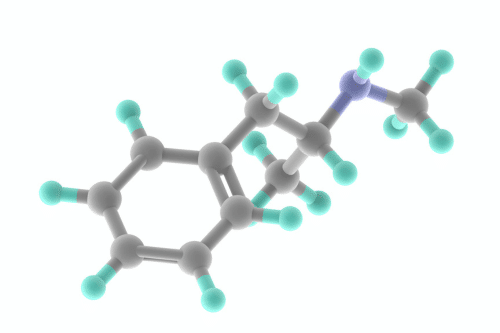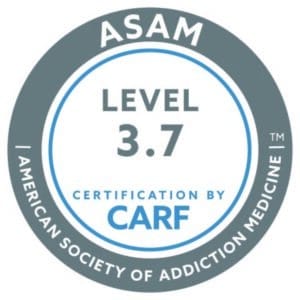Meth vs Amphetamine: Understanding the Differences
Defining Methamphetamine
Methamphetamine is a powerful stimulant belonging to the amphetamine class of drugs, with significant effects on the central nervous system. It is often abused as an illicit drug, though prescription methamphetamine exists in the form of Desoxyn, used sparingly for attention-deficit hyperactivity disorder (ADHD).

Chemical Structures
The chemical composition of methamphetamine differs slightly from amphetamine. Methamphetamine contains an additional methyl group, which enhances its ability to cross the blood-brain barrier. This results in stronger effects, including a more intense sense of euphoria and a rapid burst of energy.
Common Uses
Methamphetamine use includes limited prescription drug applications for ADHD and obesity. However, its primary use is illicit, with common names for meth including “crystal meth” and “ice.” The illicit forms are often manufactured under dangerous conditions, making their use highly risky.
Understanding Amphetamine
Amphetamine is a prescription stimulant widely used to manage attention-deficit/hyperactivity disorder and narcolepsy. It is less potent than methamphetamine but shares similar mechanisms of action.
Medical Applications
Amphetamines are commonly found in prescription amphetamines like Adderall and Vyvanse, which help regulate energy levels and improve cognitive function. These drugs are prescribed in controlled doses to minimize adverse effects and reduce the risk of addiction.
Effects on the Brain
Amphetamine affects neural pathways by stimulating dopamine and norepinephrine release. This enhances focus, promotes a mild sense of euphoria, and boosts energy levels. Long-term use without proper medical supervision can lead to addiction risks and negative impacts on the human body.
Mechanism of Action
The difference between amphetamine and methamphetamine lies in their impact on the brain. Methamphetamine produces a more significant dopamine surge, resulting in more intense euphoric effects and a higher risk of addiction.
Short-term Effects
- Methamphetamine: Increased body temperature, faster heart rate, violent behavior, and a heightened sense of euphoria.
- Amphetamine: Improved focus, controlled energy levels, and appetite suppression when used as prescribed.
Long-term Effects
- Methamphetamine: Methamphetamine addiction, meth mouth, brain damage, and increased risk of heart failure and liver damage.
- Amphetamine: Potential for cardiovascular issues, irregular heartbeat, and reduced quality of life with non-prescribed use.
Manufacturing Processes

Legal Production of Amphetamines
Prescription stimulants like Adderall are manufactured under strict regulations to ensure quality care and consistent dosing.
Illicit Production of Methamphetamine
The illegal meth production process involves over-the-counter counter medications combined with toxic chemicals. This leads to illicit meth that poses extreme health risks.
Forms and Methods of Use
Prescription Forms of Amphetamine
Prescription forms of amphetamine include oral doses like tablets and extended-release capsules. These are taken via oral administration to treat attention-deficit hyperactivity disorder and narcolepsy.
Illicit Forms of Methamphetamine
Forms of meth such as “crystal meth” are often smoked, snorted, injected, or swallowed. These methods heighten its addictive potential and increase the risk of heart attack and cardiac arrest.
Legal Status and Regulation
Amphetamine Legislation
Amphetamines are classified as Schedule II drugs due to their high addictive potential and risk for abuse. They are available only with a prescription medication from licensed healthcare providers.
Methamphetamine Legislation
Methamphetamine is also a Schedule II substance, but its non-medical use is heavily penalized. Efforts to curb the illicit drug market include regulating access to chemical formula precursors.
Potential for Abuse
Addiction Risk Factors
The risk of addiction to amphetamines and methamphetamine increases with larger doses, frequent use, and underlying mental health issues.
Patterns of Abuse
- Amphetamine drug: Often misused as a study drug or recreationally for its euphoric effects.
- Methamphetamine: Misuse involves binge patterns, leading to severe withdrawal symptoms and damage to the nervous system stimulant pathways.
Symptoms of Addiction
Behavioral Indicators
Signs of amphetamine use disorder or methamphetamine use disorder include:
- Impulsive behavior
- Risky behaviors and poor judgment
- Obsession with obtaining the drug
Physical Indicators
- Rapid onset of weight loss
- Insomnia and hyperactivity
- Deterioration of daily life
Withdrawal Symptoms
Methamphetamine Withdrawal
Common withdrawal symptoms of meth include intense cravings, extreme fatigue, and a phenomenon known as meth crash, where energy and mood plummet.
Amphetamine Withdrawal
Withdrawal from prescription amphetamines results in severe withdrawal symptoms, including depression, irritability, and a temporary decline in cognitive function.
Treatment Options
Behavioral Therapies
Treatment for amphetamine vs methamphetamine addiction includes behavioral effects therapies like cognitive-behavioral therapy (CBT) and motivational interviewing. These approaches address the negative effects on mental health and behavior.
Medication-Assisted Treatment
Medications such as bupropion and naltrexone are being studied for managing addiction risks related to methamphetamine. Proper treatment and intensive treatment options are essential to improve the quality of life for individuals struggling with addiction.
If you or a loved one are battling methamphetamine addiction or amphetamine use disorder, seeking help from qualified healthcare professionals is vital. At Opus Treatment, we provide comprehensive care, tailored solutions, and support to help you regain control over your life. Contact us today to explore treatment options.
Frequently Asked Question's
Amphetamines and methamphetamines are both stimulant drugs that affect the central nervous system, but they differ in potency and use. Methamphetamine has an extra methyl group in its chemical structure, making it more potent and longer-lasting. Amphetamines are commonly used as prescription medications for conditions like attention-deficit hyperactivity disorder (ADHD) and narcolepsy, while methamphetamine is rarely prescribed and mostly used as an illicit drug like crystal meth.
Methamphetamine use is associated with more severe adverse effects, including meth mouth, brain damage, heart damage, and increased risk of violent behavior. Long-term use can also lead to methamphetamine addiction and significant physical and mental deterioration. Amphetamine misuse can result in cardiovascular issues, irregular heartbeat, and addiction risks, but its controlled use as a prescription drug under medical supervision typically avoids these severe outcomes.
Both drugs increase dopamine levels in the brain, but methamphetamine produces a stronger and more prolonged sense of euphoria due to its enhanced ability to cross the blood-brain barrier. This leads to more intense euphoric effects and a higher potential for abuse. Amphetamines, like those found in prescription stimulants such as Adderall, have milder effects when taken as directed, helping improve focus and regulate energy levels without causing the extreme highs and lows seen with methamphetamine use.
Treatment for both methamphetamine addiction and amphetamine use disorder involves a combination of behavioral therapies and intensive treatment. Cognitive-behavioral therapy (CBT) is a common approach to help individuals manage triggers and cravings. For methamphetamine addiction, medications like naltrexone are being explored as part of medication-assisted treatment. Seeking help from specialized healthcare providers ensures access to proper support, improving the chances of recovery and enhancing overall quality of life.












